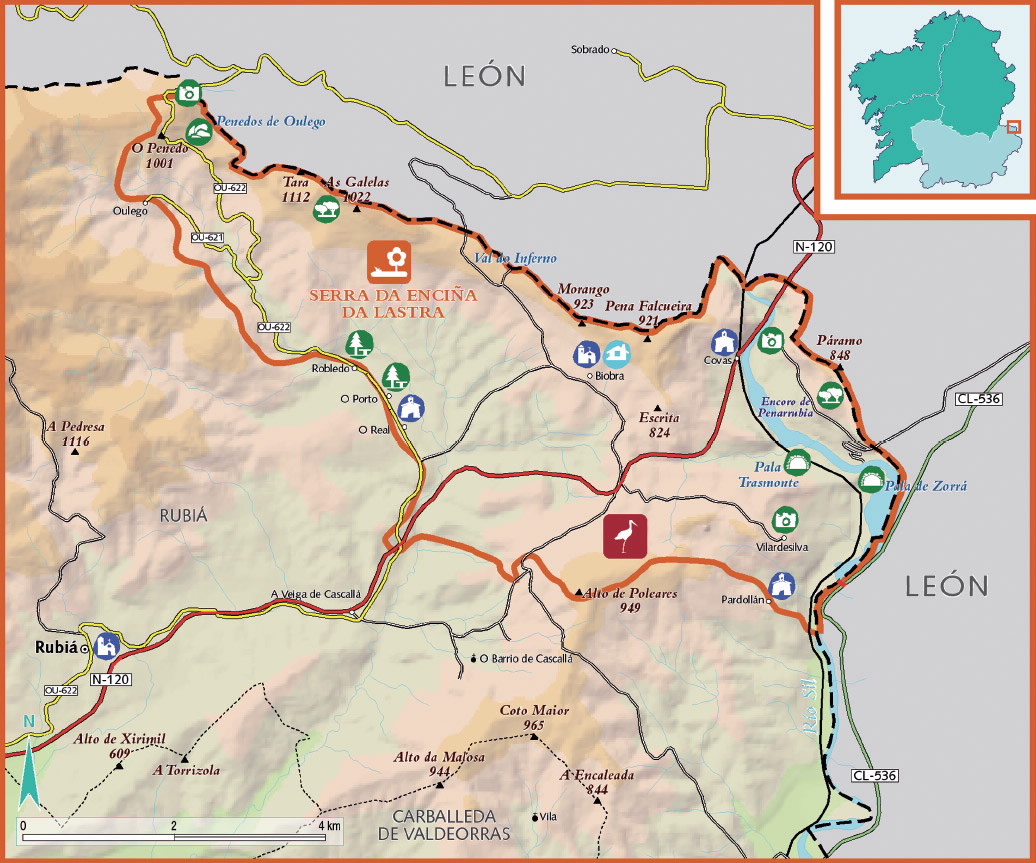Turismo de Galicia
-
Things to do
Way of St. James
Nature
Culture and heritage
Beaches and coast
Tourist trails
- Top ten: Ten unrivalled destinations
- The route of the camellia
- Tourist routes
- Pathways for discovering a country
- Walks to fall in love with
- Greenways
- Scenery at the wheel
- EuroVelo Galicia
- Beyond the Sunset
Gastronomy
Health tourism
PROMOTIONS TO ENJOY NOW
Cultural agenda
Will happen... View all
- Places to visit
-
Plan your trip
-
A miña viaxe
A MIÑA VIAXE
- Compartir
- Correo
- Imprimir
mailto:?subject=Content from Tourism of Galicia: SERRA DA ENCIÑA DA LASTRA&body=I recommend you read the information SERRA DA ENCIÑA DA LASTRA extracted from the Tourism of Galicia site on page https://www.turismo.gal/recurso/-/detalle/17162/serra-da-encina-da-lastra?langId=en_US%26ctre=2%26tp=1
Datos do recursos turístico
Description
The Lastra mountain range is the natural east of Galicia. Here the holm oak has its own history. It tells about the Mediterranean climate and the limy soil it needs to exist. It is for this reason that it is scarce in the rest of Galicia. It gives its name to the Natural Park, for it seems that in years gone by a massive holm oak acted as a guide to travellers in these parts. It is only a story, but a holm oak like the one in the past can be admired on land near the Covas cemetery, and is recognized as a Singular Tree.
Accompanying the holm oaks we find other Mediterranean species: cork trees, rebolos (oaks with a small trunk), almond trees and olives. There are also chestnut trees, and a mention of them takes us back two thousand years. Then, the Romans transported gold from this region to enrich the Empire. In exchange they left two treasures: their language and the chestnut trees masterly elements of this landscape.
Nobody can remain indifferent to the beauty of the mountain towers of Penedos do Oulego, the shape of the Val do Inferno ravine, the sheer slopes of Pena Falcueira. The Sil divides this mountainous system forming a steep-walled gorge. The Covas straits constitute an aesthetic experience for the travellers who cross the region by train.
And the interior of this land will still surprise us with its palas, a word of pre-Roman origin which means caves. Here are located the biggest network of underground caves in the region and the largest colonies of bats living in the close to two hundred registered fissures and caves, some of which are extremely long, such as the Cova da zorra (600m), or landmarks in Galician potholing, such as the pala of Xilberte, the pala of Pombo, la pala of Trasmonte or la pala of Tralapala.
Access
The Ways of St. James
Situation
Area
Services
Without missing
Singular nature
Information and facilities
Further features
Map





